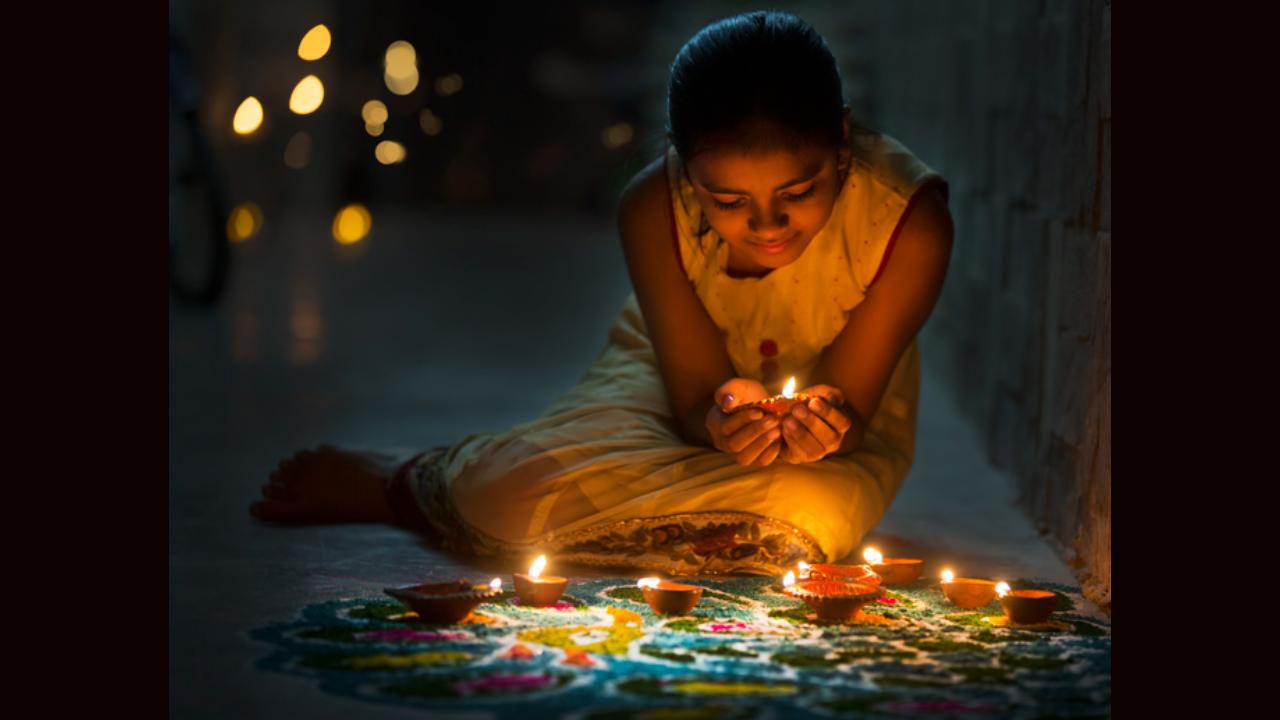
Diwali is one of the major festivals celebrated across India and as common knowledge exists it is said to be the festival of light, hope and a celebration of darkness over evil. The celebrations which last for five days mainly mark the arrival of Lord Rama, Goddess Sita and Lord Lakshman to Ayodhya after defeating Ravana in Lanka on Vijayadashmi or Dussehra. In India, Hindus, Jains, Sikhs and some Buddhist communities celebrate Diwali and the stories or interpretations differ across communities.
As we gear up for Diwali celebrations in the coming week, let’s take a look at the backstory and what the mythology says about the significance of each of these five days.
Dhanteras
Dhanteras or Dhanatrayodashi marks the first day of Diwali celebrations. The word ‘Dhan’ means wealth and ‘teras’ means thirteen; Dhanteras is observed on the thirteenth lunar day of the Kartik month, overlapping with October and November, according to the Hindu calendar. This year Dhanteras will be observed on November 4.
According to the Hindu mythology, when the Devas (lords) and the Asuras or those who were anti-god were engaged in churning the ocean–popularly known as Samudra Manthan–for obtaining the ‘amrit’, or the nectar of immortality, Lord Dhanavantari emerged from the ocean with a vessel full of the magical potion and with a text of Ayurveda. This is believed to have happened on the day of Dhanteras.
Lord Dhanavantari, an incarnation of Lord Vishnu, is known to be the physician of the other Hindu Gods. Dhanteras is observed to worship Lord Dhanavantari and Hindus believe it is an auspicious occasion to buy any item of metal, especially gold, or new things for home and to attract luck and prosperity.
Naraka Chaturdasi
The second day of Diwali is popularly known as Chhoti Diwali and is also known as Kaali Chaudas in some parts of India. As per mythology, Naraka Chaturdasi is celebrated to mark Lord Krishna’s victory over the Asura Narakasura, who has imprisoned 16,000 princesses. In some parts of North India, it is celebrated to commemorate the victory of Kali over Narakasura.
The word Naraka means hell and the significance of the day is defined by the victory of good over evil and light over darkness. It is celebrated to seek peace at home and do away with all the negativity in life. Some Hindus also perform rituals to liberate the souls of their ancestors and guide them towards the journey of afterlife. During Narak Chaturdasi, Hindus begin their day with early morning rituals, light diyas, wear new clothes, put rangoli at the entrance of their houses and begin preparations for the following day or the most important day of Diwali.
Lakshmi Pujan
The day when Lakshmi Puja is performed is the most important day of Diwali and is celebrated to worship Lakshmi — the Goddess of wealth, prosperity and good fortune and the wife of Lord Vishnu. This year, Lakshmi Pujan will be observed on November 6.
On this day, devotees perform late evening hour-long puja for Goddess Lakshmi, Ganesha, Rama, Sita and Kuber (the God of Wealth) and offer sweets. Lighting diyas (earthen lamps) is a must on this day as Diwali is all about lights, hope and new beginnings for the devotees. Generally, people do not fast and they feast on Diwali delicacies with their families and neighbours. The day is celebrated as the beginning of a new year by many Hindus in Maharashtra.
Govardhan Puja
A day after Lakshmi Puja, devotees worship Lord Krishna for saving the lives of villagers from heavy rains and floods caused by Lord Indra’s anger. The story goes that he did so by lifting the Govardhan mountain and providing shelter to the villagers. This legend is remembered by making a small mountain of food or cow dung, representing the Govardhan mountain, to offer it to the lord. The day is also known as Balipratipada by some communities to commemorate the victory of Vishnu over Bali. In Gujarat, people celebrate this day as the beginning of a new year.
Bhai Duj
Bhai Duj or Bhau Beej is the last day of the festive celebrations. This year, Bhai Duj will be celebrated on November 8. This day is observed to celebrate the bond between brothers and sisters. It is similar to another Hindu festival, Raksha Bandhan, but during Bhai Duj, a brother travels to meet the sister.
According to the legend, Lord Krishna visits his sister Subhadra after defeating Narakasura. Subhadra welcomes Krishna by applying tilak on his forehead. Another interpretation says Yamraja visited his sister Yamuna and granted her a boon that her visitors on this day will be liberated from all of their sins.
By the end of the sixth day, though people continue to light the diyas and lanterns, the celebrations are mainly low-key marking the end of the festivities for many Hindu communities. Now that you are aware of the stories behind these five days, you can add more meaning to celebrating Diwali and rattle off trivia in case you are questioned by the know-it-alls!
Also Read: Post-lockdown street art: What are Indian graffiti artists up to?
Stay connected with us on social media platform for instant update click here to join our Twitter, & Facebook
We are now on Telegram. Click here to join our channel (@TechiUpdate) and stay updated with the latest Technology headlines.
For all the latest Art-Culture News Click Here
